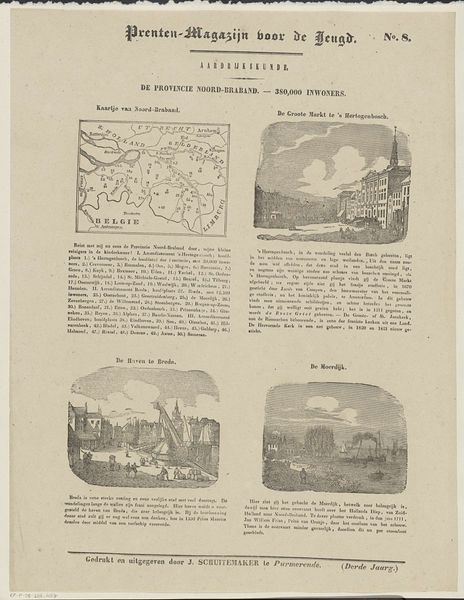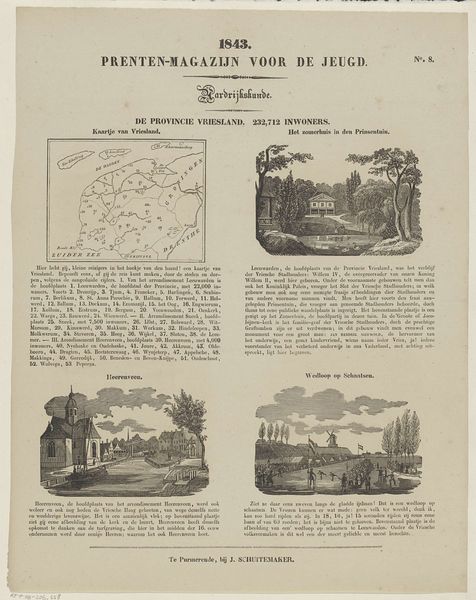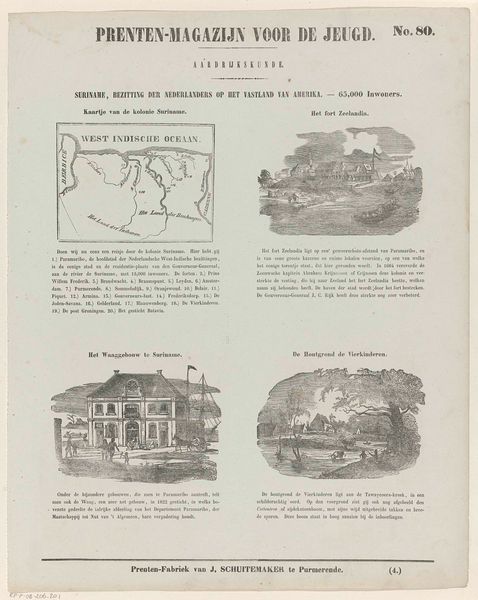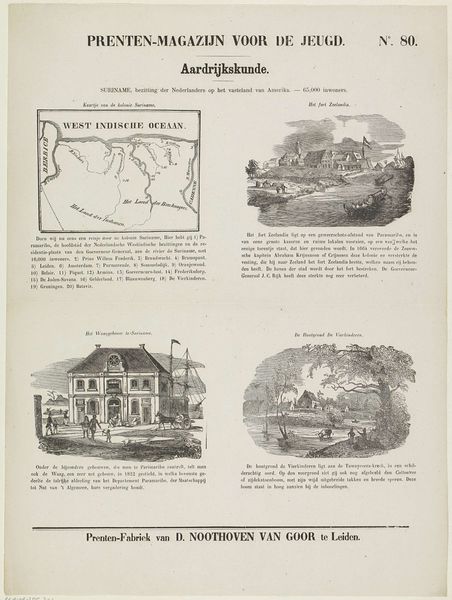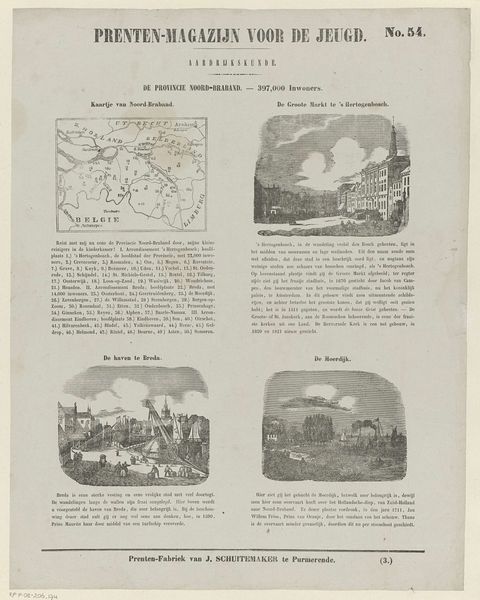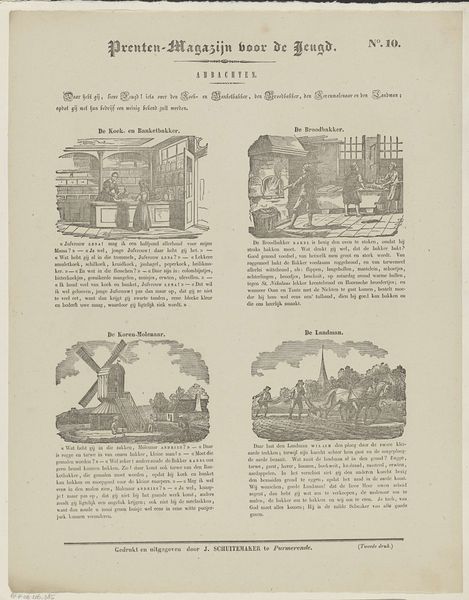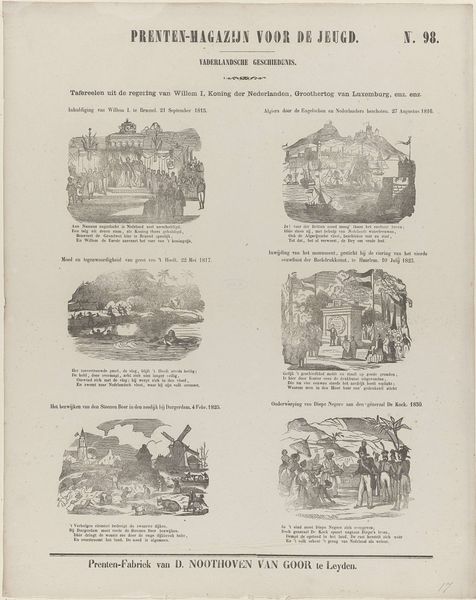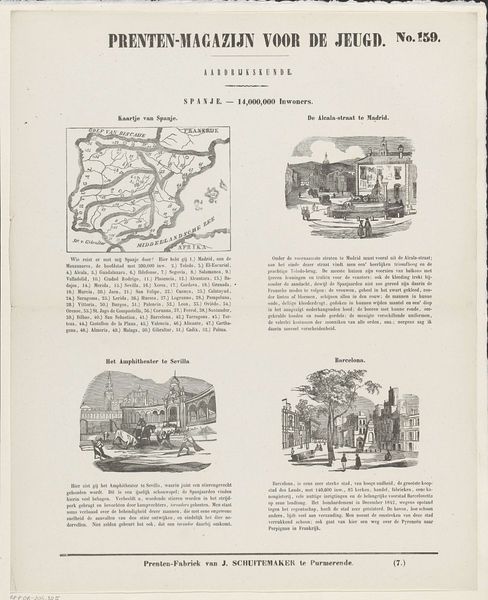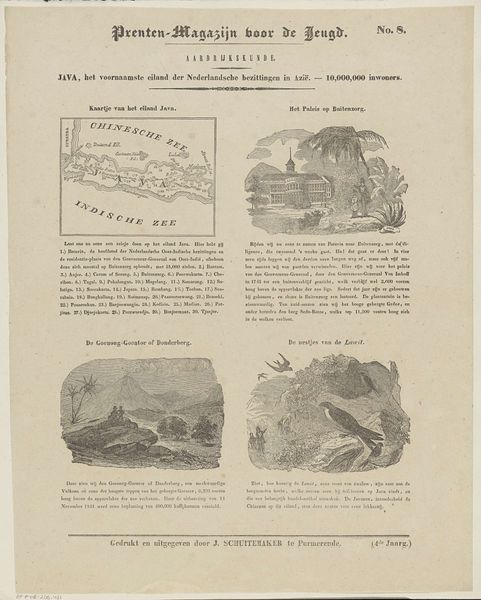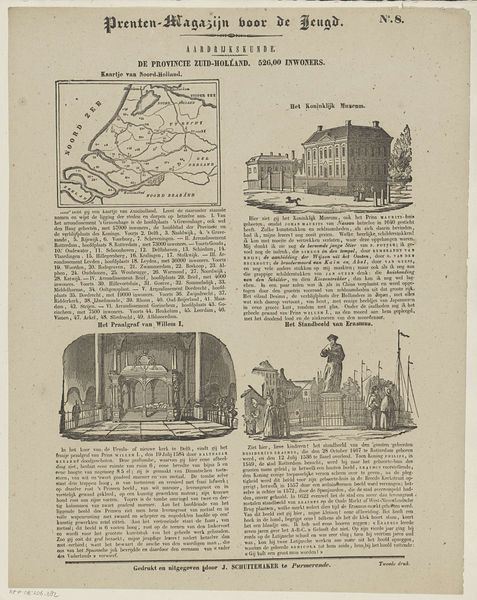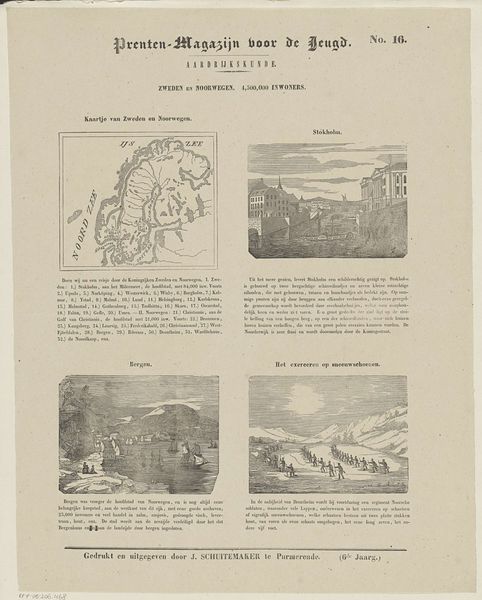
Suriname, bezitting der Nederlanders op het vastland van Amerika. - 65,000 inwoners 1845
0:00
0:00
print, engraving
#
dutch-golden-age
# print
#
landscape
#
cityscape
#
engraving
Dimensions: height 394 mm, width 326 mm
Copyright: Rijks Museum: Open Domain
Curator: Let's turn our attention to this fascinating engraving entitled "Suriname, bezitting der Nederlanders op het vastland van Amerika - 65,000 inwoners" or, "Suriname, possession of the Netherlands on the mainland of America - 65,000 inhabitants." It was created in 1845 by Jan Schuitemaker. Editor: My first impression is how ordered it feels, almost like a page torn from a geography textbook. But the small details of the scenes, like the figures, they seem weighed down by something more than simple depiction. Curator: Schuitemaker, a publisher and printer based in Purmerende, created this image as part of a series for children, using engraving. Note the way it combines a map with depictions of key locations: Fort Zeelandia, the weigh house in Suriname, and Vierkinderen. Editor: It’s that stark contrast that grabs me. The seemingly innocent intention of educating youth masks a complex narrative of colonialism. The neat layout contrasts sharply with the implied human cost – the dispossession of indigenous populations and the horrors of the plantation system. Even at this distance, these landscapes are stained with those histories. Curator: The imagery draws heavily on established visual tropes. The map itself asserts a European claim over the territory. But even within that framework, the images carry certain emotional weights. The fort for instance, as a sign of power and dominance… Editor: Exactly! It speaks to how knowledge was wielded as a tool of empire. Showing these scenes, the fort, the government buildings, implies a benevolent Dutch presence. It's as if they are educating the children on the glory, ignoring what that "glory" was founded upon. Curator: This work is part of the period that promoted specific versions of knowledge that we must revisit. Editor: Indeed. Schuitemaker's engraving acts as a reminder: representations of place and people were anything but neutral, always participating in existing relations of power and ideological reinforcement. Even a print created for children, a space supposedly removed from overt political agenda, still operates as a critical historical document about a very troubled chapter in Dutch colonial expansion.
Comments
No comments
Be the first to comment and join the conversation on the ultimate creative platform.
